#cultural revival
Note
Hello. This is a rather mundane question considering all the things, but I got curious. Does Hebrew have accents? How do they vary in and out of Israel?
I understand if you choose not to reply as this is a difficult time for you. In any case, take care🩷🩷🩷
Hi Nonnie! No, don't worry, all questions that are truly interested in Jewish culture are welcome! ^u^
TBH, something to remember about Hebrew is that it has quite a unique history. To the best of my knowledge, it is the only language that was used on a daily basis as the lived in language of a native population, then "died" as a result of Jews being exiled. As they found themselves in other countries, they had to speak the local language. They didn't abandon Hebrew, but it stopped being the langauge in which they lived their daily lives. Hebrew became the language of prayer, of scripture study, and terms from it bled into the local languages Jews spoke, creating Jewish versions of these languages (Yiddish being the Jewish version of German, Ladino being the Jewish version of Spanish, Yevanik being the Jewish version of Greek, and there are also Jewish versions of Arabic and other languages, too), so Hebrew still had an impact on Jews, and they were still connected to it... but it was no longer a "living" language. It was closer to what Latin is today. A language in which religious ceremonies are conducted, that theologians study, but not a language that anyone conducts their daily life in.
Then, as a part of the project of reclaiming and reviving the Jewish native life in Israel that came to be known as Zionism, people set out to revive our native language, too. There was a realization that it had to be adapted to modern life, give it terms for things that didn't exist 2,000 years ago, so it would be useful for people who wanted to conduct their daily lives in Hebrew again. And that's how the last of the Canaanite languages became the only "dead" language to be revived, and return to be the lived in language of its native people.
I mention this unique history, because modern Hebrew isn't the same as biblical Hebrew (though about 60% of modern Hebrew IS biblical). It means if there were different Hebrew accents during biblical times, we don't know it for sure.
At the same time, the fact that Jews were spread out in the diaspora, and their pronunciation of Hebrew (as a dead language) came to be influenced by the local languages they spoke while in exile. So a Jew who returned to Israel from the diaspora in Germany, a Jew who returned to Israel from the diaspora in Argentina, and a Jew who returned to Israel from the diaspora in Yemen do not have the same accent when speaking Hebrew.
But these are not considered regional accents of Hebrew in the same way that you can find different regional accents of English when traveling across England... If we put aside the accents of Jews returning to Israel, and instead we look at the accents of Jews born in Israel, the ones born into speaking modern Hebrew, there's a myth of a Jerusalem accent. I say myth, because you'll hear all over Israel people swearing, that Jerusalemites pronounce a few words differently. The most common example is the word 'mataim' (which means two hundred), and many Israelis insist Jerusalemites pronounce it ma'ataim, with the first vowel prolonged and emphasized. I have lived in Jerusalem since 2002 and I have never heard it. I think in this sense, regional accents are usually, at least in part, a product of geography. It determines how far apart people live, how much they interact, how much they hear others speaking the same language as they do. The smaller a country, and the easier travel in it is, the fewer accents it's likely to produce. And I think that's the main reason why there aren't really accents in Israel (other than those of people who came to speak Hebrew as a second language), because it's a very small country, and because today, it's pretty easy to travel in it (you can cross it from the most northern point to the most southern one in slightly over 5 hours).
I hope that kind of answers it? Thank you for the kind words, I hope you're well, too! xoxox
#ask#anon ask#israel#hebrew#jewish history#jewish#jew#jews#jumblr#frumblr#native israeli#native history#cultural revival#language revival#native revival
79 notes
·
View notes
Text
Celebrating Indigenous Brilliance: A Path Towards Reconciliation
Shaina Tranquilino
October 9, 2023

In our continuous journey towards reconciliation, it is essential that we strive to dismantle stereotypes and misconceptions about Indigenous communities. Too often, the narratives surrounding Indigenous peoples focus solely on their suffering and trauma, perpetuating a one-dimensional view of their experiences. However, as Len Pierre rightly asserts, we must also make a conscious effort to learn about and celebrate the brilliance and success within Indigenous cultures. By doing so, we can foster a deeper understanding and appreciation for the resilience and diversity that defines these remarkable communities.
The Importance of Shifting Perspectives:
For far too long, mainstream media has predominantly portrayed Indigenous communities through a lens of victimhood, emphasizing historical injustices and ongoing struggles. While acknowledging past and present challenges is crucial in understanding the systemic issues faced by Indigenous populations, it is equally vital to recognize their achievements and contributions across various fields.
Indigenous Brilliance: A Rich Tapestry of Success:
Indigenous cultures are rooted in ancient wisdom, profound spirituality, and a deep connection with nature. They possess an innate ability to adapt to changing environments while preserving their heritage. The world owes much gratitude to Indigenous peoples for invaluable contributions in areas such as art, music, literature, science, medicine, education, sports, activism, and more.
Artistic Expressions: From traditional crafts like weaving and pottery to contemporary forms like painting and sculpture, Indigenous artists have enriched global artistic traditions with their unique perspectives. Their work serves as a powerful medium for storytelling while preserving cultural identity.
Literary Legacy: From oral traditions passed down through generations to modern literary works exploring personal experiences or societal issues relevant today – Indigenous authors bring forth diverse narratives that enlighten readers worldwide. Their stories shed light on the richness of indigenous cultures' histories while providing valuable insights into contemporary life.
Scientific Innovations: Indigenous knowledge systems boast sustainable practices that have guided societies for centuries. Techniques related to agriculture, land conservation, and medicinal plant usage demonstrate a deep understanding of the natural world. By incorporating this wisdom into modern scientific practices, Indigenous communities contribute to ecological sustainability and inspire innovative approaches.
Sports and Athletics: Indigenous athletes have achieved remarkable success on national and international platforms. Whether it be in hockey, lacrosse, basketball, or other sports – their talent and determination serve as inspirations for future generations while dismantling stereotypes.
Activism and Community Leadership: Indigenous individuals have been at the forefront of social movements advocating for human rights, environmental protection, and cultural preservation. Their contributions continue to shape policies that promote inclusivity, justice, and equity for all.
Len Pierre's quote emphasizes the need to celebrate Indigenous brilliance alongside acknowledging their suffering and trauma. By expanding our knowledge about the achievements and successes within Indigenous cultures, we can break free from limited narratives. It is through this understanding that we pave the way towards reconciliation based on mutual respect, appreciation, and a genuine desire to learn from one another. Let us collectively embark on a journey that recognizes the resilience, brilliance, and strength inherent in Indigenous communities worldwide.
#indigenous brilliance#celebrating diversity#reconciliation journey#indigenous culture#honouring traditions#cultural revival#resilience and strength#indigenous pride#empowering communities#inclusive society#healing the past#building a better future#celebrating indigenous brilliance#a path towards reconciliation
3 notes
·
View notes
Text
Exploring Lynchburg Metro News: Your Gateway to Local Insights and Stories
Lynchburg, VA – Lynchburg Metro News, also known as LYMN, stands at the forefront of local journalism in Lynchburg, Virginia. This dynamic news platform offers an in-depth look into the heart of the Lynchburg Metro Area, making it a primary source for residents seeking authentic and timely updates on their community.
What Makes Lynchburg Metro News Unique?
Diverse Coverage: From the bustling…

View On WordPress
#community engagement#Cultural Revival#Economic Growth#Innovative Businesses#Local News#Lynchburg VA#Urban Development
0 notes
Text
A Timeless Resurgence: Unraveling the Threads of The Renaissance (14th-17th centuries)
In the vast tapestry of human history, few periods have ignited the flames of creativity, intellect, and cultural revival quite like The Renaissance. Spanning from the 14th to the 17th centuries, this remarkable epoch was a symphony of innovation, a dance of ideas, and a gallery of human potential. As we step into this era of rebirth and exploration, let’s unravel the threads of The Renaissance,…
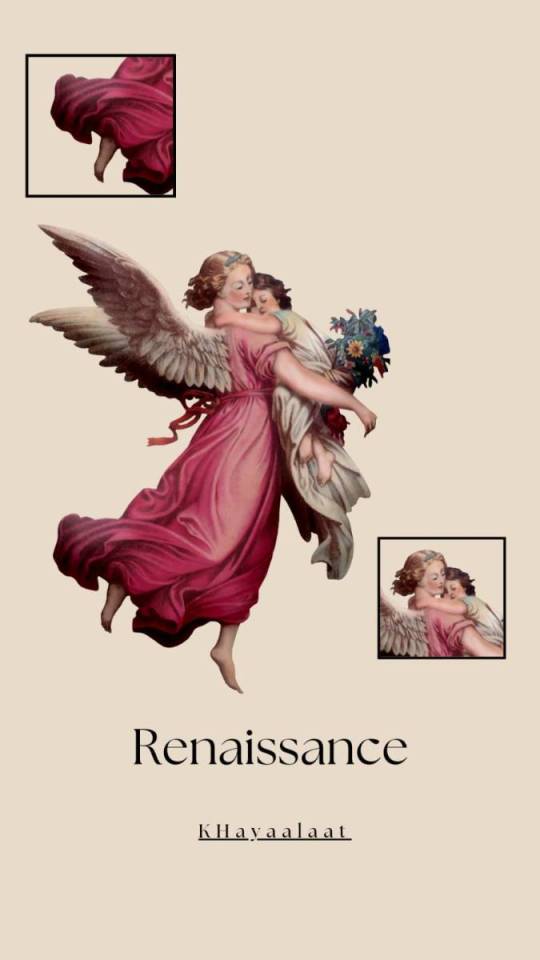
View On WordPress
#artistic masterpieces#cultural revival#Erasmus#individualism#innovation#inspiration#khayaalaat#Machiavelli#Montaigne#philosophical currents#reason#skepticism#The Renaissance#thinkers#wordpress
0 notes
Photo

New Post has been published on https://www.knewtoday.net/resilience-and-revival-five-stories-of-aboriginal-life-in-australia-after-european-invasion/
Resilience and Revival: Five Stories of Aboriginal Life in Australia After European Invasion

The European invasion of Australia in the late 18th century had a profound and lasting impact on the Aboriginal people, the continent’s original inhabitants. The arrival of European settlers brought significant changes to the social, cultural, and political landscape, leading to a complex and often painful history for Aboriginal communities. However, amidst the challenges and injustices, stories of resilience, cultural revival, and a quest for justice have emerged, painting a picture of a people determined to preserve their heritage and create a better future.
In this collection of stories, we delve into five significant narratives that shed light on the experiences of Aboriginal Australians after the European invasion. These stories highlight both the struggles and the triumphs, offering a glimpse into the diverse ways in which Aboriginal communities have navigated the post-invasion era.
From the heart-wrenching tale of the Stolen Generation, where Aboriginal children were forcibly separated from their families to the inspiring fight for land rights and self-determination, these stories encapsulate the profound impact of European colonization on the Aboriginal people and their ongoing efforts to reclaim their cultural identity.
We will also explore the pivotal moment of reconciliation and apology, as the Australian government acknowledged the injustices of the past, offering hope for healing and unity. Additionally, we will delve into the resurgence of Aboriginal art and cultural expression, as Indigenous artists reclaim their narratives and share their rich heritage with the world.
Lastly, we will uncover the remarkable stories of Aboriginal land and sea management practices, where traditional ecological knowledge blends with modern conservation principles, creating sustainable ecosystems and economic opportunities for Aboriginal communities.
These stories weave together a narrative of strength, resilience, and determination among Aboriginal Australians. They provide a deeper understanding of the ongoing journey toward justice, reconciliation, and the revitalization of Aboriginal culture. Through these tales, we are reminded of the importance of acknowledging and respecting the legacy of the Aboriginal people and working towards a more inclusive and harmonious future.
The Stolen Generation
The Stolen Generation refers to a dark chapter in Australian history when Aboriginal and Torres Strait Islander children were forcibly removed from their families by the Australian government and placed into institutions or with non-Indigenous foster families. This policy, which spanned from the late 1800s to the 1970s, aimed to assimilate Indigenous children into Western culture, severing their ties to their families, culture, and land.
The impact of the Stolen Generation on individuals and communities was profound and long-lasting. Children were taken away without consent or understanding, often experiencing trauma, loss of cultural identity, and a sense of displacement. Families were torn apart, and the bonds of kinship and community were shattered. The effects of this policy continue to be felt today, with intergenerational trauma and ongoing struggles for healing and reconciliation.
One example that highlights the experiences of the Stolen Generation is the story of Doris Pilkington Garimara, as depicted in her book “Follow the Rabbit-Proof Fence” (later adapted into a film). Doris, along with her sister and cousin, was forcibly taken from her mother in 1931 when she was just four years old. They were transported to Moore River Native Settlement, hundreds of miles away from their home.
Determined to return to their family and their traditional lands, the three girls embarked on a remarkable journey, following the Rabbit-Proof Fence that stretched across the Western Australian outback. Despite the challenging conditions and the constant threat of capture, they relied on their knowledge of the land and their resilience to navigate their way home.
Doris Pilkington Garimara’s story, along with countless others, sheds light on the courage, strength, and resilience of the Stolen Generation. It serves as a testament to their enduring connection to their culture and their unyielding spirit in the face of adversity.
The recognition of the Stolen Generation and the injustices they suffered led to a national apology by then Prime Minister Kevin Rudd in 2008. The apology aimed to acknowledge the pain and suffering caused by the forced removals and to begin the process of healing and reconciliation between Indigenous and non-Indigenous Australians.
The stories of individuals like Doris Pilkington Garimara and the countless others impacted by the Stolen Generation serve as a reminder of the ongoing need for understanding, compassion, and support for healing the wounds inflicted upon Aboriginal and Torres Strait Islander communities. It is through listening, acknowledging, and learning from these stories that a path toward reconciliation and justice can be forged.
Land Rights Movement
The Land Rights Movement in Australia emerged as a response to the dispossession and marginalization of Aboriginal and Torres Strait Islander peoples from their traditional lands following the European invasion. It sought to address the historical injustices, assert Indigenous rights to land, and regain control over their ancestral territories. The movement gained momentum in the 1960s and 1970s, and its efforts have resulted in significant legal and social changes.
One prominent example of the Land Rights Movement is the Gurindji strike and the subsequent Wave Hill Walk-Off in 1966. Led by Vincent Lingiari, the Gurindji people, were working as cattle station laborers in Wave Hill, Northern Territory, demanding better working conditions and the return of their traditional lands.
The Wave Hill Walk-Off was a groundbreaking event that captured national attention. More than 200 Aboriginal workers, together with their families, left the Wave Hill cattle station, camping at Daguragu (formerly known as Wattie Creek) and refusing to work until their demands were met. Their actions sparked a larger movement for land rights and provided a rallying point for Aboriginal activism across the country.
The Gurindji strike and the Wave Hill Walk-Off led to the establishment of the Aboriginal Land Rights (Northern Territory) Act 1976. This legislation recognized Aboriginal land rights in the Northern Territory and paved the way for the return of land to Indigenous ownership. It was a significant milestone in the Land Rights Movement, empowering Aboriginal communities and enabling them to reclaim their ancestral lands.
Another significant example is the Native Title Act of 1993. This legislation recognized the existence of native title, the recognition of Indigenous land rights based on traditional connections to the land, and established a legal framework for Indigenous communities to make native title claims. The Native Title Act aimed to address the historical injustices and provide a pathway for land rights reconciliation.
The Mabo v Queensland (No 2) case, a landmark High Court decision in 1992, played a pivotal role in the recognition of native title. Eddie Mabo, along with other Torres Strait Islander and Aboriginal plaintiffs, challenged the doctrine of terra nullius (the notion that Australia was unoccupied prior to European settlement) and successfully argued for the recognition of native title rights.
These examples highlight the activism, perseverance, and collective efforts of Aboriginal and Torres Strait Islander peoples in their fight for land rights. The Land Rights Movement has led to the return of significant areas of land to Indigenous ownership, enabling communities to reconnect with their traditional lands, practice cultural traditions, and exercise self-determination.
The struggle for land rights is ongoing, and Indigenous communities continue to assert their rights and negotiate for recognition and control over their lands. The Land Rights Movement remains a critical aspect of the broader movement for Indigenous rights, self-determination, and reconciliation in Australia.
Reconciliation and the Apology
Reconciliation and the Apology refer to significant steps taken in Australia to acknowledge and address the historical injustices and mistreatment of Aboriginal and Torres Strait Islander peoples following the European invasion. These initiatives aim to foster healing, understanding, and a path toward unity between Indigenous and non-Indigenous Australians.
Reconciliation: Reconciliation in Australia involves acknowledging the past injustices, promoting understanding, and working towards a more respectful and equitable future for Aboriginal and Torres Strait Islander peoples. The concept emphasizes the importance of building positive relationships, respecting Indigenous cultures and heritage, and addressing the ongoing issues faced by Indigenous communities.
The journey toward reconciliation encompasses various aspects, including education, awareness, community engagement, and policy changes. It involves acknowledging and respecting the diverse cultures, languages, and histories of Aboriginal and Torres Strait Islander peoples, as well as supporting self-determination and empowering Indigenous communities.
Apology: The Apology refers to the formal apology delivered by then Prime Minister Kevin Rudd on behalf of the Australian government to the Stolen Generations on February 13, 2008. The Stolen Generations were the Aboriginal and Torres Strait Islander children who were forcibly removed from their families and communities under government policies of assimilation.
In his speech, Rudd acknowledged the pain, trauma, and injustices suffered by the Stolen Generations and their families. The Apology sought to provide recognition, validation, and healing, aiming to restore dignity and respect to those who had endured the devastating impacts of forced removal.
The Apology represented a significant moment in Australian history, symbolizing a national commitment to acknowledging past wrongs and working towards reconciliation. It sparked hope for a renewed relationship between Indigenous and non-Indigenous Australians, promoting understanding, healing, and a shared future.
Following the Apology, various initiatives and programs have been implemented to support reconciliation efforts, including increased funding for Indigenous education, health services, and community development. National Reconciliation Week, held annually from May 27 to June 3, provides an opportunity for Australians to reflect on the importance of reconciliation and to participate in events that promote understanding and unity.
Reconciliation and the Apology are ongoing processes, requiring continued commitment, understanding, and meaningful actions from all Australians. The goal is to create a more inclusive, just, and equitable society where Aboriginal and Torres Strait Islander peoples can thrive, celebrate their cultures, and contribute to the nation as equal partners.
These initiatives mark important milestones in Australia’s journey towards healing, recognition, and forging stronger relationships between Indigenous and non-Indigenous communities. They represent a commitment to learning from the past, acknowledging the ongoing impacts of colonization, and working towards a shared future of reconciliation and justice.
Land and Sea Management
Land and Sea Management in Australia refers to the Indigenous-led practices and initiatives aimed at preserving and sustainably managing the natural environment, including land, waterways, and marine ecosystems. These practices combine traditional ecological knowledge with modern conservation principles to ensure the long-term sustainability of ecosystems while supporting Indigenous cultural connections to the land and sea.
Indigenous land and sea management initiatives recognize the deep understanding and stewardship of Aboriginal and Torres Strait Islander peoples, who have maintained sustainable relationships with the environment for thousands of years. These initiatives encompass various activities, such as fire management, cultural mapping, species monitoring, habitat restoration, and sustainable fishing practices.
One notable example of Indigenous land and sea management is the work of the Yolngu people in Arnhem Land, Northern Territory. Through their organization, the Dhimurru Aboriginal Corporation, the Yolngu people have been actively involved in caring for their ancestral lands and coastal areas.
Dhimurru’s initiatives include fire management practices, where controlled burning is utilized to maintain healthy ecosystems, reduce the risk of wildfires, and promote the regeneration of native plants and animals. The Yolngu people also engage in sea management, monitoring and protecting marine species, and implementing sustainable fishing practices to ensure the preservation of coastal resources.
Another example is the Djelk Rangers program in West Arnhem Land. The program, established by the traditional owners of the region, involves Indigenous rangers working to conserve and manage the land, rivers, and coastal areas. The Djelk Rangers are involved in activities such as weed and pest management, cultural site protection, and land and waterway monitoring. They also collaborate with scientists and researchers to combine traditional knowledge with scientific approaches, fostering a holistic approach to land and sea management.
Indigenous land and sea management practices not only contribute to biodiversity conservation but also support cultural preservation, economic development, and community empowerment. These initiatives provide employment and training opportunities for Indigenous communities, enabling them to reconnect with their cultural heritage, pass on traditional knowledge to future generations, and assert their rights and responsibilities as custodians of the land and sea.
The success of Indigenous land and sea management programs has led to increased recognition and support from government, non-governmental organizations, and the broader community. Collaborative partnerships have been formed, enabling Indigenous communities to have a greater say in land management decisions and policies.
Overall, Indigenous land and sea management initiatives exemplify the intersection of environmental conservation, cultural preservation, and community development. These practices demonstrate the importance of traditional ecological knowledge and the role of Indigenous communities as custodians of the land and sea, leading to more sustainable and inclusive approaches to environmental stewardship.
Aboriginal Art and Cultural Revival
Aboriginal Art and Cultural Revival in Australia has played a vital role in preserving and celebrating Indigenous traditions, stories, and cultural heritage. Aboriginal art encompasses a wide range of artistic expressions, including paintings, sculptures, carvings, weaving, and more. It is deeply rooted in the spiritual and cultural beliefs of Aboriginal communities and serves as a powerful medium for storytelling and connection to the land.
Aboriginal art has gained international recognition for its unique styles, vibrant colors, and intricate designs. It provides a visual representation of the rich cultural diversity and deep connection to Country held by Aboriginal and Torres Strait Islander peoples.
One example of Aboriginal art and cultural revival is the Western Desert Art Movement. It emerged in the 1970s in remote communities of Central Australia, such as Papunya, and is often credited as the catalyst for the contemporary Aboriginal art movement. Artists like Clifford Possum Tjapaltjarri and Emily Kame Kngwarreye played significant roles in popularizing Aboriginal art and introducing it to a broader audience.
The Western Desert Art Movement revitalized traditional art practices and storytelling techniques, leading to the establishment of art centers in Aboriginal communities. These art centers provide a space for artists to create and share their work, ensuring cultural knowledge is passed down to future generations.
Contemporary Aboriginal artists draw inspiration from Dreamtime stories, ancestral connections, and the natural environment. They employ a diverse range of styles and techniques, ranging from dot paintings to intricate cross-hatching and more abstract forms. Each artwork holds deep cultural significance and often carries messages related to identity, land rights, spirituality, and social issues.
The success and recognition of Aboriginal art have also brought economic opportunities to Indigenous communities. Art sales, exhibitions, and licensing agreements provide a sustainable income source for artists and their communities, fostering self-determination and empowering Aboriginal individuals and art centers.
In recent years, Aboriginal art has been increasingly incorporated into public spaces, galleries, and museums, both in Australia and internationally. It serves as a means of education, raising awareness about Aboriginal culture and history, and challenging stereotypes and misconceptions.
The cultural revival facilitated by Aboriginal art extends beyond visual representations. It has influenced other creative disciplines, including music, dance, storytelling, and film, contributing to a broader renaissance of Indigenous cultural practices and expressions.
Aboriginal art and cultural revival not only provide a platform for Indigenous voices and narratives but also contribute to a deeper understanding and appreciation of Australia’s rich cultural tapestry. They serve as a testament to the resilience and ongoing presence of Aboriginal and Torres Strait Islander peoples, and their commitment to preserving and sharing their cultural heritage with the world.
#Aboriginal Art#Aboriginal History#Cultural Revival#European Invasion#Indigenous Knowledge#Land Rights Movement#Reconciliation#Stolen Generation
0 notes
Text


#scene#scenecore#scene revival#scene blog#scene kid#scene boy#trendercore#cringe culture is dead#epic face#art#my art#decoration#room decorations#monster energy#:P
969 notes
·
View notes
Text
I've definitely posted this exact thought before but I can't find it, so - it's just an overwhelming and absolute world-historic W for liberalism that even the trads and revivalists conceive of 'culture' as meaning holidays and cuisines and maybe language or religion, and not legal codes or political organization or modes of sustenance or-
#actual cultural revivalism will look like idk the amish or the ultra-orthodox jewish communities in new york minimum#which isn't an endorsement - syncretism is cool and fun and good#but like c'mon#I am waiting impatiently for all that is solid to start dissolving into air
270 notes
·
View notes
Text




#old tumblr#soft grunge#2014 revival#2014 tumblr#2014 grunge#i miss 2014#2014core#tumblr grunge#2014 aesthetic#2014 vibes#indie#indie sleaze#grunge#grungy aesthetic#nicole dollanganger#lana del rey#artic monkeys#tumblr culture#i miss old tumblr
292 notes
·
View notes
Text




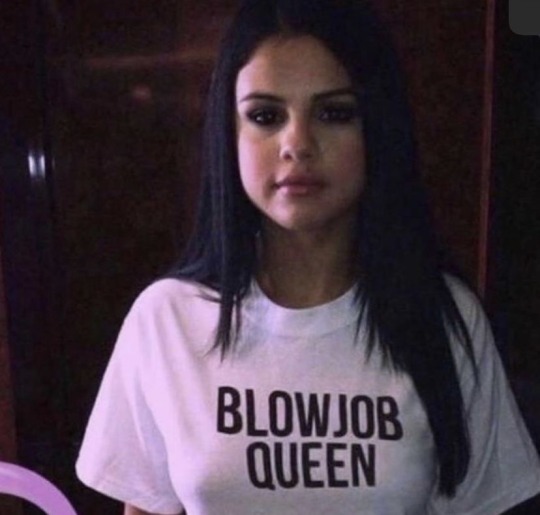





take me back.
#2014 revival#i miss 2014#2014 tumblr#2014core#2014 vibes#bring back 2014#2014 nostalgia#2014 aesthetic#2010s internet#2010s#2010s aesthetic#2010s nostalgia#nostalgia#celebrities#girlblogging#2010s tumblr#2010s music#pop culture#fashion inspo#outfit inspo#aesthetic#summer#miley cyrus#rihanna#kim kardashian#kanye west#selena gomez#justin bieber#kylie jenner#one direction
165 notes
·
View notes
Text

Their hair is so BRIGHT. o_O
#scene#scenecore#scene aesthetic#scene culture#scene girls#scene queen#scene kid#scene hair#scene makeup#scene fashion#scene style#scene stuff#scene blog#scene revival#jordanjump-scare
366 notes
·
View notes
Text


#on the chilton bandwagon today ig#dont send help#its already too late#hes literally cancel cultures favourite lil victim#God keeps trying to cancel him but the devil thinks hes a funny lil guy and wont let him die#poor lil cockroach#frederick chilton#raul esparza#hannibal#nbc hannibal#hannibal nbc#netflix#hannibal netflix#hannibal crack#renew hannibal#revive hannibal
257 notes
·
View notes
Text
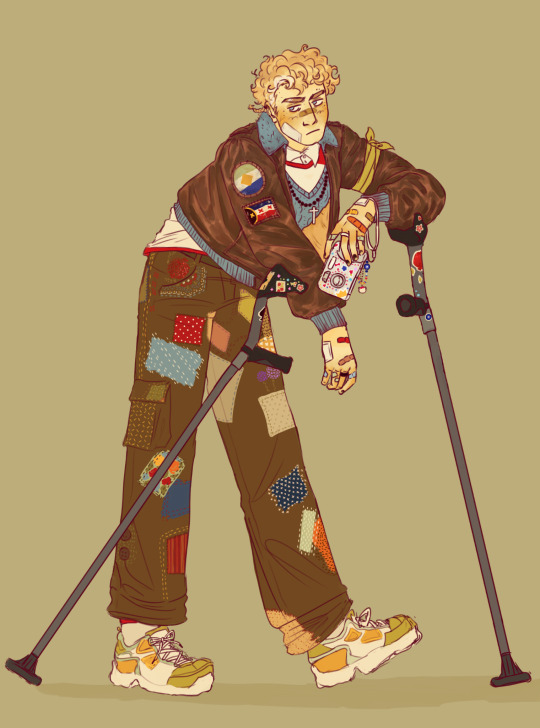

For someone who vibrates if he thinks about the guy for too long, I don't draw ctommy nearly as much as I should
#why yes those *are* the aroace rings thank you for noticing#yes i gave him some pomegranate parafenelia he deserves a sprinkle of my culture#some more design notes: the jacket is repurposed from wilbur's old pogtopia coat#and tubbo's bandana is wrapped the same place revivedbur's bandage is#my hc is that post revival he is just constantly cold (ahem rheumatism ahem) so he has minimum three layers on at all times#layers being his l'manberg shirt his classic tommyinnit tm shirt and a knitted sweater vest of friend's wool#the red on his sleeves is from helping wilbur with the redstone in ho16#oh and the evil eye cus more culture why not#thats all the design choices but i do want to mention#i took inspiration from art nouveau specifically alohonse mucha's art. however. only after i finished rendering the jacket did i remember#the clothes werent supposed to be so detailed#but its fine its a feature now#oh and the sbi braid dont forget that#ive ranted for so long now i think i may add this all in the reblogs later#but yeah hope yall like it#my art#dsmp#dsmp fanart#ctommy#ctommy fanart#fennec. art
1K notes
·
View notes
Text
Honestly I think the most unforgivable crime comitted by the new ATLA adaptation is bringing back the fucking kataang/zutara discourse🥰
Like, I can forgive a lot, but I can't forgive the fact that my own eyes, in the year of our lord 2024, have to be subjected to takes I first saw on 2011 DeviantArt
#tbf not to poke the hornets nest but its honestly just zutara people complaining abt 'haters' and being 'bullied for their ship'#like could you guys at least double check that the 'hater' opinion ur disagreeing w has actually been expressed by anyone THIS DECADE lol#atla#natla#avatar the last airbender#zutara#kataang#|<- REALLY poking the hornets nest by maintagging these lol. but you know what. maybe i do wanna fight. just to feel something#in that case to be clear im not talking abt zutara fanart or whatever im specifically talking abt the dumb discourse#y'all might not have been in the trenches but i was there and boy was there so much DUMB SHIT from both sides#i dont even care abt either of them lol. literally babys first fandom experience and i had to learn QUICK to avoid both#of them like the fucking plague#honestly is the concept of a 'shipping war' still a thing even?#i havent really been involved in fandom for a while lol but it just feels like such an early 2010s thing#looking at these posts in the atla tag really feels like a time window back to like 2014. even the tone#like is that still a thing?#are you guys bringing back the concept of 'lemon' and 'no flaming plz' next#you really dont want to revive 2012 fandom culture guys fucking trust me
97 notes
·
View notes
Text

Luke weilding both his green lightsaber and the darksaber is my favorite thing in the world actually.
Close-ups below:


✨slay✨
#star wars#the mandalorian#luke skywalker#the darksaber#dinluke#(implied)#fellas is it gay to wield the ancestral weapon that defines your husband's authority over his people as the sole ruler of Mandalore#that is also the physical symbol of how your cultures intersected at one point in history then violently parted#until you two came along and were two boys who kissed#Din in the background: “oh my god please just take it”#Luke: “lmao sorry babe I already have one genocided culture to revive” *muah* “luv u” :)#sol draws the space gays
109 notes
·
View notes
Text
POV: My b-day :3

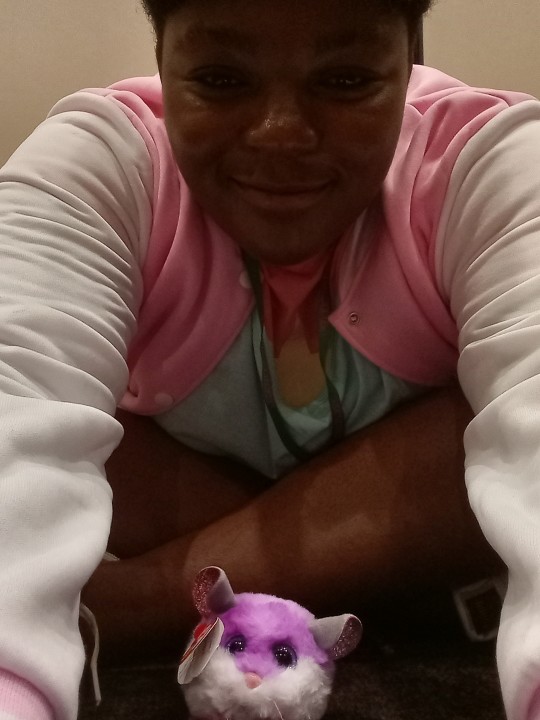
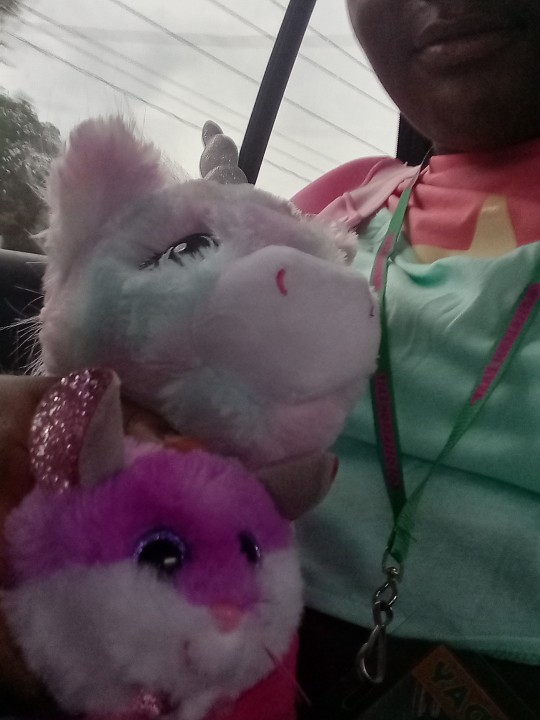




#scene blog#cringe culture is stupid#cringe culture is dead#scene kid#cringe#scene#scene aesthetic#2000s scene#rawr x3#rawring 20s#rawr :3#scene revival#scenecore#gir#invader zim#cosplay#build a bear#beanie babies#happy bithday to me#today was MEOWZERZ#im 15 naooo X3
159 notes
·
View notes
Text
1 G0TZ ZUM N3W K3WL PANTZZZ x333


Can't wa1t 2 cr3at3 zum n3w k3wl f1tz!!



#flashing warning#eyestrain warning#scenecore#scene#scene revival#scene blog#scene kid#scene boy#cringe culture is dead#trendercore#typing quirk#emocore#emo#emo revival#emo kid#emo boy#pants#tripp pants#rawr x3
327 notes
·
View notes